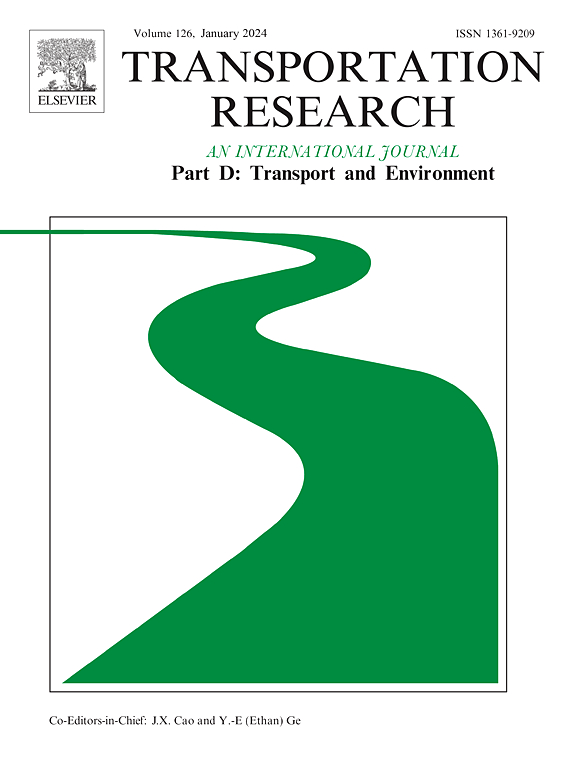绘制流动差距:从社会经济角度对可达性和公平性的地理空间分析
IF 7.7
1区 工程技术
Q1 ENVIRONMENTAL STUDIES
Transportation Research Part D-transport and Environment
Pub Date : 2025-07-12
DOI:10.1016/j.trd.2025.104909
引用次数: 0
摘要
本研究通过考察地铁系统的可达性、空间分布和公平性来探讨城市交通中的社会不平等。该研究采用多方面的地理空间网络分析,整合了各种方法,阐明了社会经济因素在交通不平等中的复杂作用。一个值得注意的结果是,方法选择显著影响运输公平的评估。分析跨越了时间和城市背景,包括对四个城市和不同地铁站缓冲区在十年期间的比较。主要发现揭示了社会经济差异的结构化模式,在计算方法中具有系统的梯度。具体来说,(1)收入不平等一直受到计算方法的影响,在所有城市都有显著的梯度;(2)劳动力可达性表现出以城市为中心的偏见,与理想模型相比,城市工人在实践中倾向于经历更长的通勤时间;(3)基于性别的劳动力细分仍然是一个持续存在的问题,但对方法的变化不太敏感。本文章由计算机程序翻译,如有差异,请以英文原文为准。
Mapping mobility gaps: geospatial analysis of accessibility and equity from socioeconomic perspectives
This study explores social inequities in urban mobility by examining the accessibility, spatial distribution, and equity of subway systems. Using a multifaceted geospatial network analysis, the research integrates various methodologies to illuminate the complex role of socioeconomic factors in transportation inequalities. A notable result is that methodological choices significantly influence the assessment of transportation equity. The analysis spans both time and urban contexts, encompassing comparisons between four cities and different subway station buffer zones over a ten-year period. Key findings reveal a structured pattern of socioeconomic disparities, with systematic gradients across computational methods. Specifically, (1) income inequality is consistently influenced by the computational approach, with notable gradients across all cities; (2) workforce accessibility displays an urban-centric bias, with urban workers tend to experience longer commutes in practice compared to idealized models; and (3) gender-based workforce segmentation remains a persistent issue but is less sensitive to methodological variations.
求助全文
通过发布文献求助,成功后即可免费获取论文全文。
去求助
来源期刊
CiteScore
14.40
自引率
9.20%
发文量
314
审稿时长
39 days
期刊介绍:
Transportation Research Part D: Transport and Environment focuses on original research exploring the environmental impacts of transportation, policy responses to these impacts, and their implications for transportation system design, planning, and management. The journal comprehensively covers the interaction between transportation and the environment, ranging from local effects on specific geographical areas to global implications such as natural resource depletion and atmospheric pollution.
We welcome research papers across all transportation modes, including maritime, air, and land transportation, assessing their environmental impacts broadly. Papers addressing both mobile aspects and transportation infrastructure are considered. The journal prioritizes empirical findings and policy responses of regulatory, planning, technical, or fiscal nature. Articles are policy-driven, accessible, and applicable to readers from diverse disciplines, emphasizing relevance and practicality. We encourage interdisciplinary submissions and welcome contributions from economically developing and advanced countries alike, reflecting our international orientation.

 求助内容:
求助内容: 应助结果提醒方式:
应助结果提醒方式:


